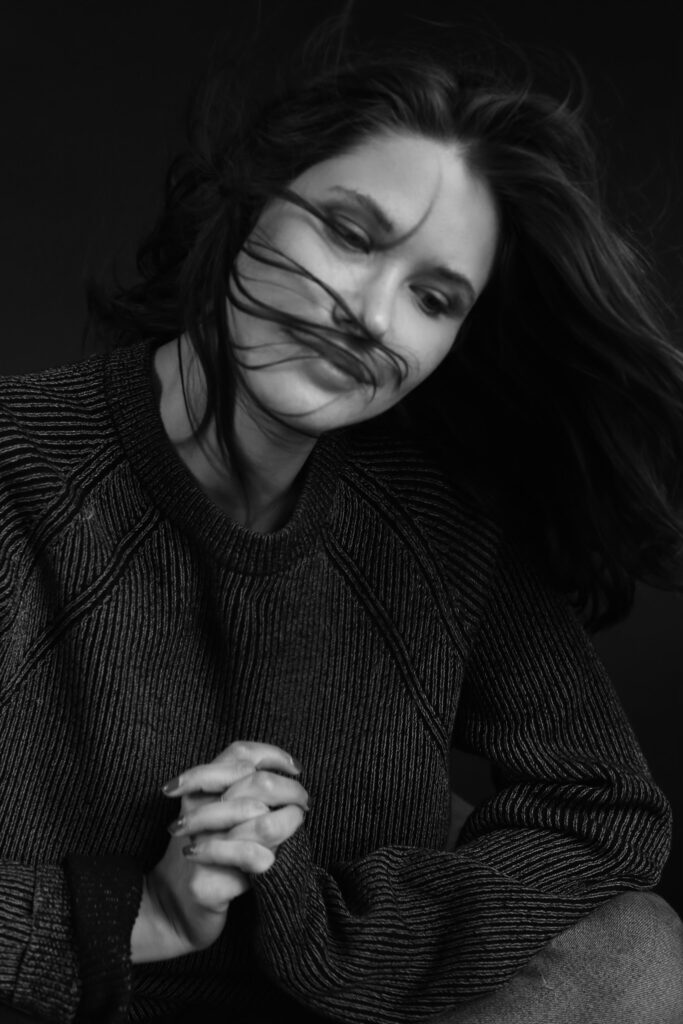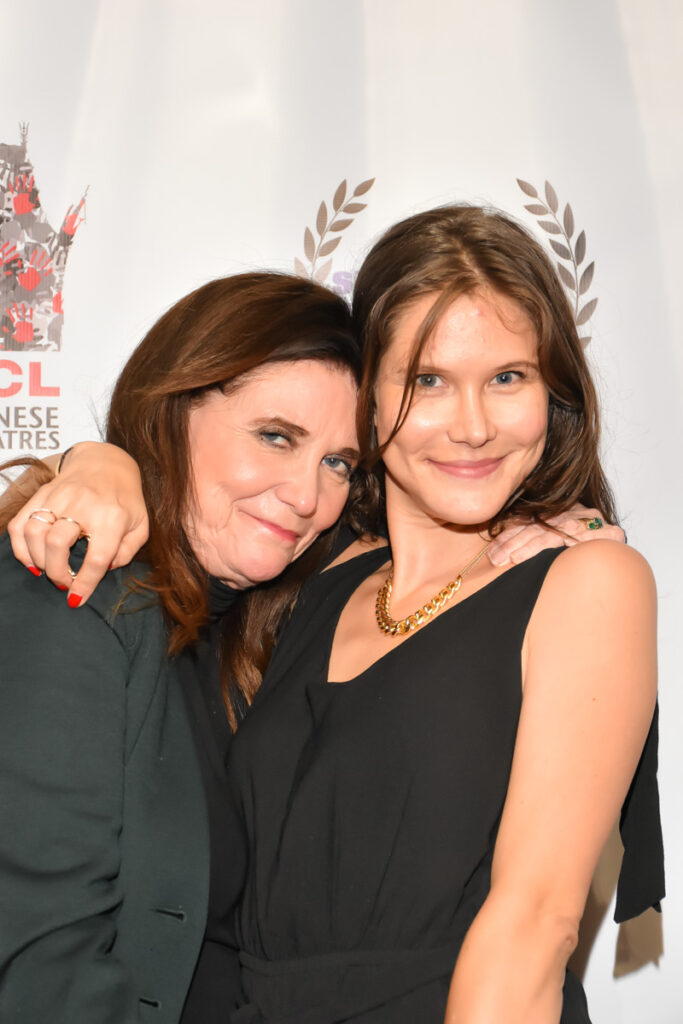The daughter of world renowned acting coach, Ivana Chubbuck, and late film director, Lyndon Chubbuck, Claire Chubbuck is an emerging female director that creates mission driven content that creates catharsis for those working on it – she calls it “Cathartic Realism”. She works with actors to use the traumatic events in their lives in order to make art – as a director, and a teacher at Ivana Chubbuck Studio, where Claire is also the Vice President.
Currently, Claire’s “Cathartic Realism” genre is being studied by medical professionals. Previous research from notable studies, including those by Dr. Brene Brown and Dr. James Pennybaker, among others, has provided evidence that Cathartic Realism is efficacious. Now, they are evaluating the therapeutic efficacy of Claire’s work with a rating scale that was created specifically for Cathartic Realism and the way Claire takes her artists through their work.
Claire has won over 30 awards for her films at high-profile film festivals such as Beverly Hills Film Festival, Chain Film Festival, Santa Monica International Film Festival, SF Indie Fest, Flickers’ Rhode Island International Film Festival, Marina del Rey Film Festival, Silicon Beach Film Festival, and Atlanta Film Festival, among others.
Claire personally won “Best Direction” at the Best Shorts Competition, in addition to “Best First-Time Director” at Canadian Cinematography Awards, New York Cinematography Awards (NYCA), and Top Shorts Awards. She also won “Best Artistic Film” at the Atlanta Film Festival 2022, “Best Narrative” at the Washington Film Festival, and was a semi-finalist for “Best Ensemble” and “Best Experimental Film” at the Los Angeles Film Awards. Claire also won Vegas Movie Award’s Prestige Award for “Best Female Filmmaker”.
FWM: What led you to the entertainment business?
I grew up watching my father direct. I have always been a big fan of my dad, and I dreamed of following in his footsteps. When I was young, there were very few female directors, but I was afraid that I didn’t have what it takes to break out in the business. Specifically, I didn’t have a penis. I decided to be practical, and I started my career on the studio side of creating content.
However, life didn’t want that for me. After tragedy struck my personal life, my emotions needed an outlet and an office job wasn’t offering me that. I started teaching the Chubbuck Technique, an acting technique all about using your pain to win, which ignited my personal love of working with actors. And then, I started directing.
In 2021, my father passed – right before my first short made it to theaters. I realized the fragility of time. That’s when I decided to take my directing to the next level. Since he passed, I have chosen to be part of the wave of women making our voices heard, and changing the landscape of filmmakers.
FWM: What is important to you as a director?
As a director, my passion is inspiring artists to find catharsis through their work. I have spent the last decade teaching actors how to find purpose in their pain using the Chubbuck Technique – and now I am formalizing that into a genre of film that I call “Cathartic Realism.”

FWM: Tell us about Cathartic Realism.
I want to give a name and rules to an important artistic endeavor in film. A take on the “true story” genre, Cathartic Realism takes the Chubbuck Technique to the next level by bringing it to the cinema, allowing artists to depict their truths – the way it felt to them, but with the empowerment that comes when you write your own ending.
It is important to have rules, so when people walk into a Cathartic Realist film, they know exact what they are getting.
I want to birth a community of artists all working in the Cathartic Realist genre where we can create with our traumas, finding purpose in our pain. When we are vulnerable together, we create a deep connection with each other. The more we allow people to speak on their own behalf, and share their experiences with the world, the larger our scope of understanding of the human experience.
FWM: Tell us about your film, “Pussy Riot: The Movement” and how this time in your life changed you forever.
I worked in Pussy Riot as a producer, and I am incredibly proud to be part of this documentary. The ground crew in Russia had to move locations frequently to avoid being put in Prison by Russian authorities. I worked on it from the safety of Los Angeles, with my father Lyndon Chubbuck. My father, who was my best friend from the time he shipped me off to rehab until the day he died, taught me about being a director and a producer. This was the first time he and I worked together, and that’s why I will treasure it forever.
FWM: What did your mother teach you about the business?
Ivana taught me that it is important to make your work about the healing of others. My work with Cathartic Realism is the combination of what I learned from my mother and my father.

FWM: In early 2022, you created three pieces of work, all currently in post- production. The first, “A Way Home.” What inspired you to tell this story?
As our military was pulling our troops out of Afghanistan, I thought about all the women who lost their significant others. I was having that conversation with an active sergeant when she said something shocking to me. She said she knows there are people stuck there to this day. Then I thought, what if someone came back to their family after they thought they were presumed dead? Let’s explore that.
I wanted to give voice to scenario that I’m told we will be facing soon, while exploring the pain of loss.
I relate to the story of the female lead. I lost a significant other back in 2014, the healing process I went through to be able to date again was arduous. It required a lot of therapy. I wanted to give voice to scenario that I’m told we will be facing soon, while exploring the pain of loss.
FWM: The second, a Cathartic Realist piece, “Resilient” where you first met Simin Vaswani. Claire. Why is this so important to you?
The story is about a woman with a traumatic past discovering the depth of her resilience with the help of her loving husband. Inspired by real life events, Resilient is a transformational piece of art told through narrative and dance. Through the writing and analytical process used in the production of “Resilient”, Simin now sees her trauma through the lens of love – enabling her to find a new level of her relationship with herself and her mother. Through the acting, she confronted her past so that she now chooses to be fearless, choosing to love when being presented with the reality of generational trauma and the psychosis that lies within. Through the post process, she has found expansion in her heart that wouldn’t have happened if she wasn’t taken through the catharsis of her own trauma. In Claire’s opinion, “Resilient is a true work of experimental art, using several genres of art therapy to create a compelling, and authentic, journey of love through pain.”
FWM: Tell us about the third, “Blueberry.” What is your mission for this film?
This is an important piece to me. Early in 2022, my best friend told me she was pregnant. I had just gone through a shift due to the loss of my dad where becoming family oriented was a top priority. So Sofia’s pregnancy was great news. Three months later, Sofia let me know that there was no longer a heartbeat, and she began a month long horror of a miscarriage. Meanwhile, a friend of ours, Andrew McIntyre, just went through the same thing with his significant other, and wanted to make a piece of Cathartic Realism to process this very significant loss in all our lives.
FWM: What’s next?
Next, I am looking to create a slate of shorts that show the range of Cathartic Realism as a genre. First, medical professionals are evaluating the therapeutic efficacy of the cathartic realism genre. Previous research, including findings from Dr. Brene Brown and Dr. James Pennybaker, has provided evidence that emotive creativity is effective. In this next slate of shorts, we are going study the artists at various points in the process using rating scales especially designed for cathartic realism.
Artistically, I want to use this next slate of shorts to show the range of cathartic realism as a genre. We have a horror piece about a fentanyl overdose, a comedy piece about erectile dysfunction and a coming of age piece about Munchausen’s syndrome – all of the films are written by the person who lived it with the power that comes with writing your own ending.


